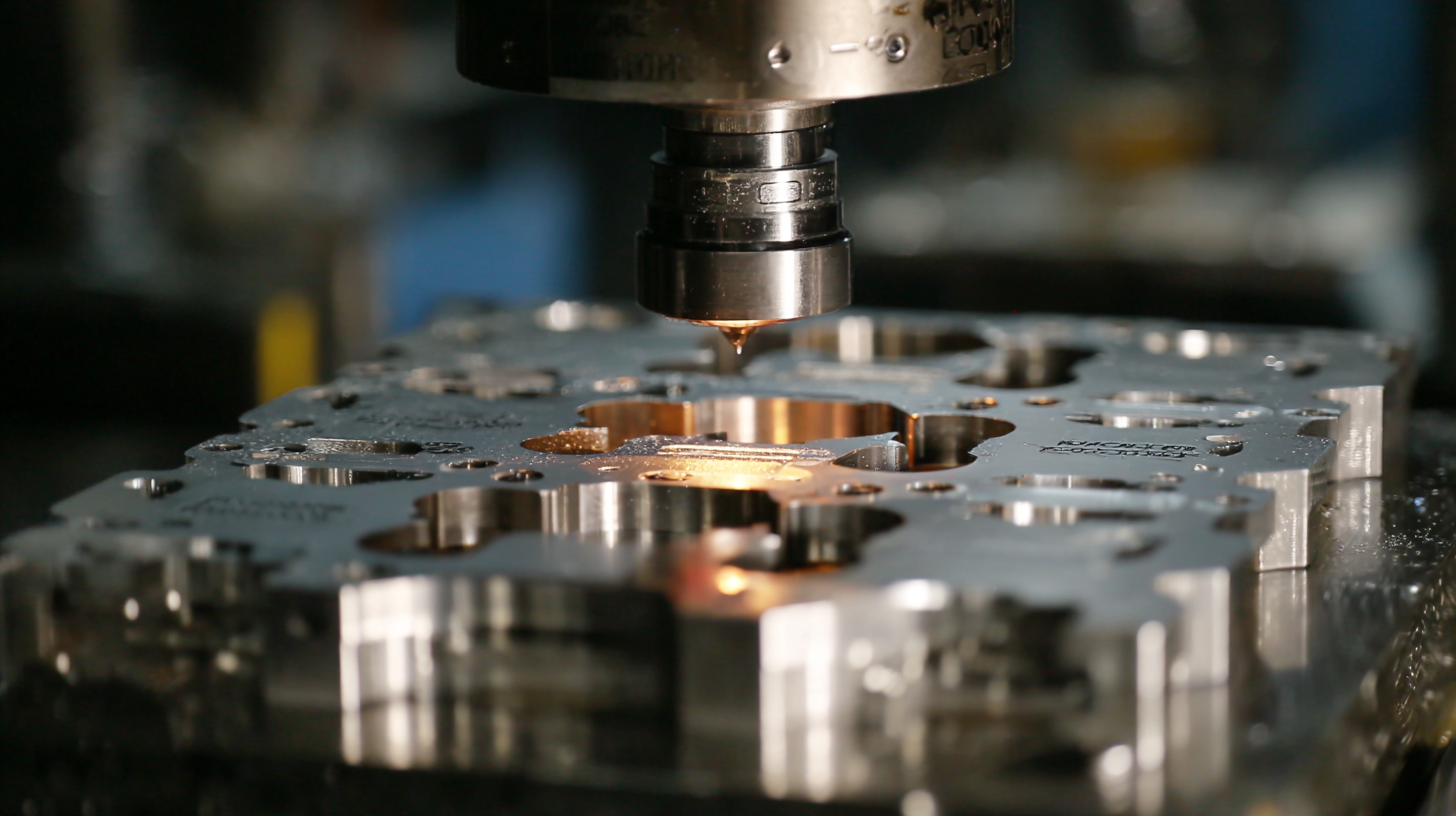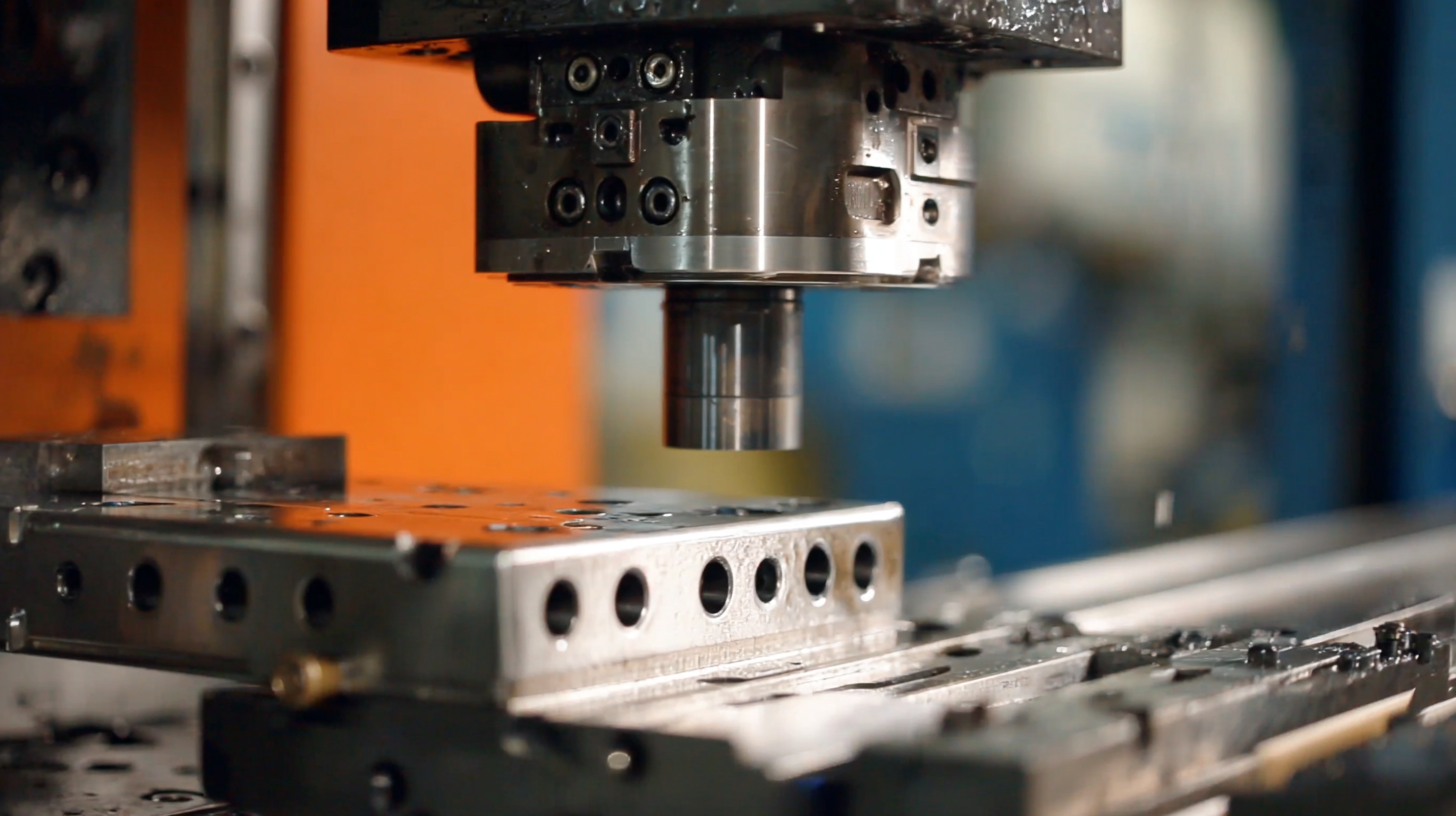
Top Strategies for Achieving Best Precision Metal Stamping Efficiency in Production
In the fast-evolving landscape of manufacturing, achieving optimal efficiency in precision metal stamping has become critical for companies aiming to maintain a competitive edge. According to a report by Grand View Research, the global precision metal stamping market is projected to reach USD 33.47 billion by 2025, with a compound annual growth rate (CAGR) of 6.2%. This growth underscores the increasing demand for high-quality stamped components across industries, including automotive, aerospace, and electronics. To meet this demand, manufacturers must implement robust strategies that enhance production efficiency while minimizing waste and operational costs. In this blog, we will explore key tactics that can elevate precision metal stamping processes, ensuring that companies not only meet production targets but also uphold standards of quality and precision that are critical in today's market.

Strategies for Utilizing Advanced Tooling to Enhance Metal Stamping Efficiency
In the quest for enhanced efficiency in metal stamping production, leveraging advanced tooling and in-process monitoring strategies is crucial. Recent reviews highlight various in-process measurement methods that focus on critical parameters such as force, geometry, and temperature during metal forming processes. By integrating real-time monitoring solutions, manufacturers can significantly minimize defects and optimize the stamping process, ensuring that components meet stringent quality standards.
Furthermore, investment in high-precision tooling is essential. The global tool steel market, projected to grow from USD 7.04 billion in 2024 to an estimated USD 11.69 billion by 2033, underscores the increasing demand for sophisticated tooling solutions in the metal stamping industry. Such advancements not only enhance production efficiency but also facilitate the manufacturing of complex parts, such as deep drawn components that differ significantly from conventionally stamped products. Emphasizing the role of precision and technology in tooling will ensure that manufacturers remain competitive and meet the evolving demands of the market.

Impact of Process Optimization Techniques on Reducing Production Cycle Time
Optimizing production processes in precision metal stamping is crucial for enhancing efficiency and reducing cycle times. By adopting advanced process optimization techniques, manufacturers can streamline their operations and minimize bottlenecks. Techniques such as Lean Manufacturing and Six Sigma can be employed to identify inefficiencies and implement continuous improvements. Lean methodologies focus on eliminating waste and optimizing workflow, while Six Sigma aims to reduce variability and improve quality. Together, these strategies can significantly cut down production cycle times, leading to faster delivery of products and increased customer satisfaction.
Another impactful method for process optimization is the implementation of automation and real-time monitoring systems. Incorporating technologies such as CNC machines and robotics not only boosts precision in metal stamping but also accelerates production rates. Real-time data analysis allows for immediate adjustments to be made during the production process, further enhancing efficiency. Moreover, investing in employee training on these technologies ensures that the workforce is skilled in maximizing the benefits of these advanced systems, resulting in a more agile and responsive production environment.
Leveraging Automation and Robotics for Improved Precision in Metal Stamping
In modern manufacturing, the integration of automation and robotics in precision metal stamping has emerged as a game-changer. These technologies not only enhance precision but also significantly increase overall production efficiency. According to a report by the International Federation of Robotics, the global installation of industrial robots is expected to reach 4 million units by 2025, emphasizing the growing trend towards automation in manufacturing sectors, including metal stamping.
Automated systems reduce human error, ensuring that parts are stamped with consistent accuracy. This reliability is crucial, particularly when working with tight tolerances that are common in sectors like aerospace and automotive, where even minor inaccuracies can lead to severe consequences. For manufacturers looking to upgrade their processes, investing in automation can lead to a 20-30% increase in efficiency according to a study by McKinsey & Company.
**Tip:** To maximize the benefits of automation, consider implementing sensors and IoT technology that provide real-time feedback on the stamping process. This allows for immediate adjustments that can maintain optimal production quality.
**Tip:** Additionally, invest in training programs for staff to familiarize them with robotic systems. A well-trained workforce can effectively operate and troubleshoot automated equipment, ensuring minimal downtime. With these strategies in place, businesses can achieve unparalleled efficiency in their metal stamping production.
Efficiency in Metal Stamping Production
Case Studies: Successful Implementations of Lean Manufacturing in Metal Stamping
In the fast-evolving landscape of metal stamping, the adoption of lean manufacturing principles has proved pivotal for companies aiming to enhance efficiency and precision. A case study from the American Metal Manufacturers Association highlights that organizations implementing lean strategies reported a 30% reduction in production waste and a 25% increase in overall productivity. By streamlining processes and eliminating non-value-added activities, companies have not only optimized their operational workflows but also improved their bottom lines.

One notable example is the implementation of 5S methodology at a leading metal stamping firm. After reorganizing their workspaces, the company saw an impressive 40% decrease in the time workers spent searching for tools and materials, translating into increased machine uptime. According to a report by the Institute of Lean Manufacturing, such operational improvements have led to a 20% reduction in cycle times, allowing for faster delivery to customers. These case studies exemplify how integrating lean principles into metal stamping processes can lead to significant gains in efficiency and quality, setting a benchmark for industry standards.
Analyzing Material Selection's Role in Maximizing Stamping Production Efficiency
When it comes to maximizing metal stamping production efficiency, material selection plays a pivotal role. The right materials not only impact the quality of the finished product but also influence the overall efficiency of the stamping process. It's essential to choose materials that possess optimal strength-to-weight ratios, durability, and workability. For instance, using high-strength steel can reduce the need for excessive material and enhance throughput while maintaining structural integrity.
Tip 1: Prioritize sourcing high-quality materials that align with the specifications of your stamping project. Cutting corners on material quality can lead to increased tooling wear and higher defect rates, ultimately harming efficiency.
In addition to quality, the thickness and type of material used can significantly affect stamping speed and precision. Thinner materials may allow for faster stamping cycles, while specialized materials can withstand higher tolerances, reducing the need for post-production modifications.
Tip 2: Conduct thorough testing on different materials before large-scale production. This practice can help identify which combinations yield the best results in terms of both efficiency and product quality, ultimately streamlining the manufacturing process.
